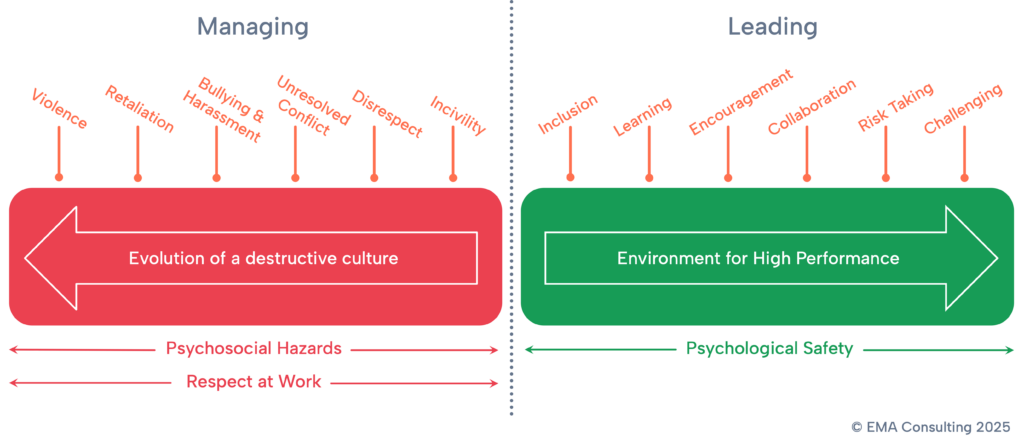It’s a question that many leaders wrestle with as they roll out culture initiatives and try to assess their impact. While common metrics such as employee engagement scores, turnover rates, and satisfaction surveys provide useful data, they often act as lag indicators – snapshots of a culture shaped over months or even years. By the time these measures reflect a misaligned or problematic culture, it may be too late to address the underlying issues effectively.
One commonly overlooked reason for a poor culture is not a lack of strategy but the failure to address behaviours that run counter to core values. These subtle behaviours, if left unaddressed, accumulate over time and eventually contribute to larger issues—from disengagement and high turnover to unresolved conflicts and even instances of bullying or harassment.
The Limitations of Traditional Metrics
Engagement surveys and turnover data, while valuable, are inherently retrospective. They report on a culture that has already been influenced by persistent, unaddressed issues. When these metrics signal low engagement or high turnover, the problematic behaviours – such as disrespect, miscommunication, and unchecked power struggles – have typically been allowed to continue for far too long. Starting corrective action at this stage means the damage may have already been done, making it harder to restore a positive workplace culture.
The Missed Opportunity in Employee Relations Data
An analysis of MyEMS case data spanning 2014 to 2025 shows that many organisations wait until conflicts escalate before intervening. Early-stage behaviours that contradict company values, such as subtle signs of poor collaboration or isolated instances of disrespect, are often overlooked. Over time, these issues intensify, contributing to a toxic culture that eventually leads to more serious problems like bullying or harassment. This reactive approach means that interventions are implemented too late, when the cost—in terms of morale, productivity, and even legal exposure—is significantly higher.

Early Behaviours: The Key to Real-Time Cultural Health
To manage and improve culture effectively, HR teams must shift their focus from lagging indicators to real-time data that capture early-stage behaviours. It is important to monitor how employees are living your company values on a day-to-day basis. Are subtle signs of poor communication or misalignment with core values emerging? Are managers actively addressing these issues or letting them pass unchecked? Tracking these early indicators allows organisations to intervene before minor concerns escalate into major disputes.
How HR Can Intervene Proactively with MyEMS
MyEMS provides a centralised platform that makes it easy to intervene early. With its clear, guided workflows and dynamic document generation, HR teams can track early warning signs and address issues before they develop into full-blown conflicts. Real‑time dashboards offer immediate visibility into emerging trends, supporting timely and transparent decision-making. This structured approach allows HR professionals to act on early behaviours, helping to maintain a fair and compliant workplace. Discover how MyEMS shifts the approach from reactive troubleshooting to proactive management.
Measuring the success of a culture strategy requires more than just looking at engagement surveys and turnover statistics. It involves understanding and addressing the early behavioural indicators that shape your company’s culture. By monitoring these signs and intervening proactively – as facilitated by solutions like MyEMS—organisations can address issues before they escalate, thereby preserving a positive and productive workplace environment.

